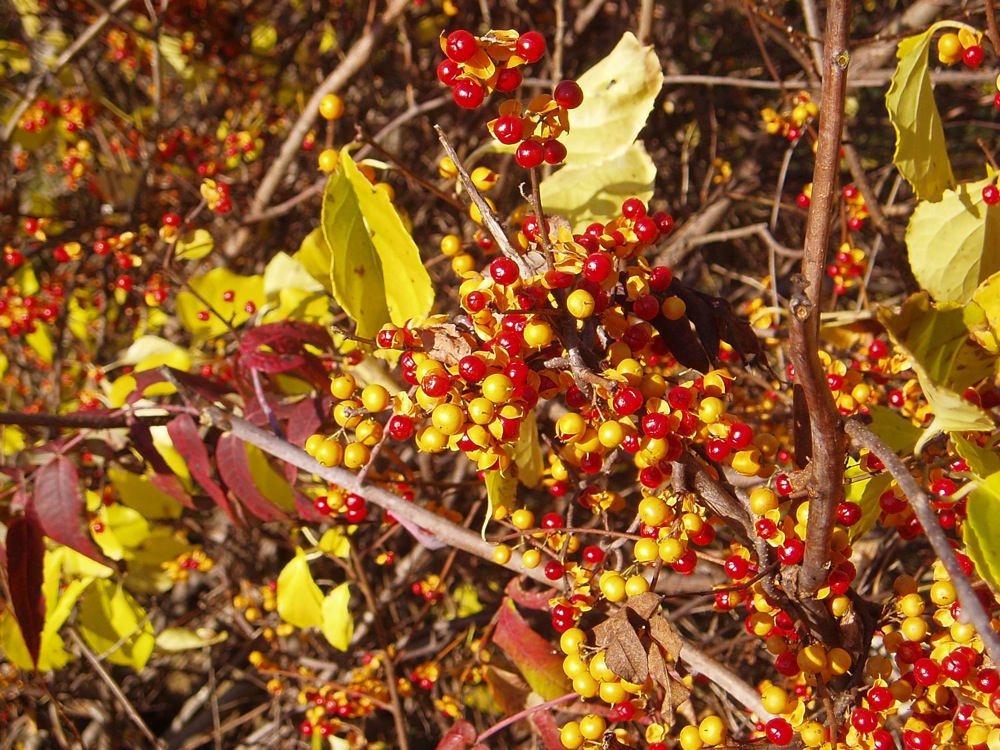Berries all along the branch. That’s how you know it’s the invasive kind.

A friend asked me once for cuttings of Oriental bittersweet from my front yard. She wanted to make a holiday wreath with it. “Ugh! Has that grown back again?” was my response. But this was several years ago. Now moving, growing, and selling Oriental bittersweet is against state law.
I have spent years hacking back this strangling vine that can kill and fell trees and crowd out other plants. My Oriental bittersweet, planted by the people who were trying to sell us the house many years ago, tunnels 10 to 12 feet underground from the front steps, emerges out of the ground, and snakes itself cunningly around a gigantic pine tree. I’ve found the vines 30 feet up. The next thing I expect is this plant will wrap around the cat, or maybe my nieces and nephews.
The Connecticut Department of Energy and Environmental Protection issued a warning today: don’t make your holiday wreaths out of this stuff. Yes, it’s free and abundant in the neighborhoods and along the roadsides. But displaying these red berries with their yellow outer coverings will spread the seeds to new areas, hastening the destruction.
Oriental bittersweet (Celastrus orbiculatus) may be attractive for craft projects, the department said, but it’s not good for the landscape. “Once established in natural settings,” DEEP said in a press release, “the vines can wrap around trees, strangling them. The extra load on the tree limbs caused by the plant can also cause the limbs to fail, contributing to damage and power outages. Improper disposal of the decorations, either outdoors or in compost after the holiday season, can contribute to the spread of this highly invasive species.”
Native plants best beloved for crafts: American bittersweet (Celastrus scandens). You know you have American bittersweet when the flowers and fruits cluster only at the end of each branch, not along the branch.
